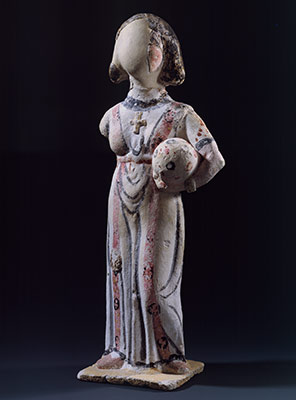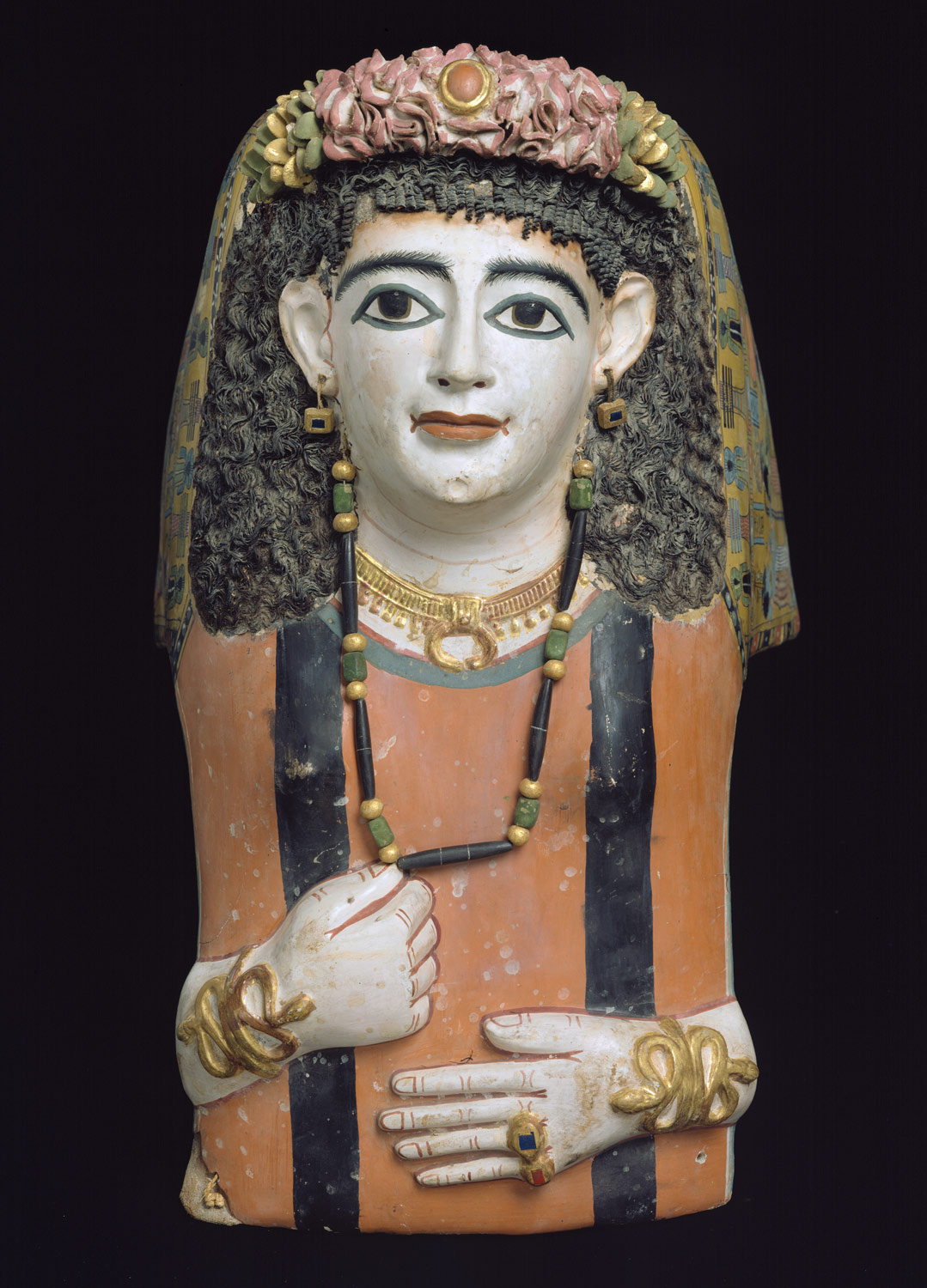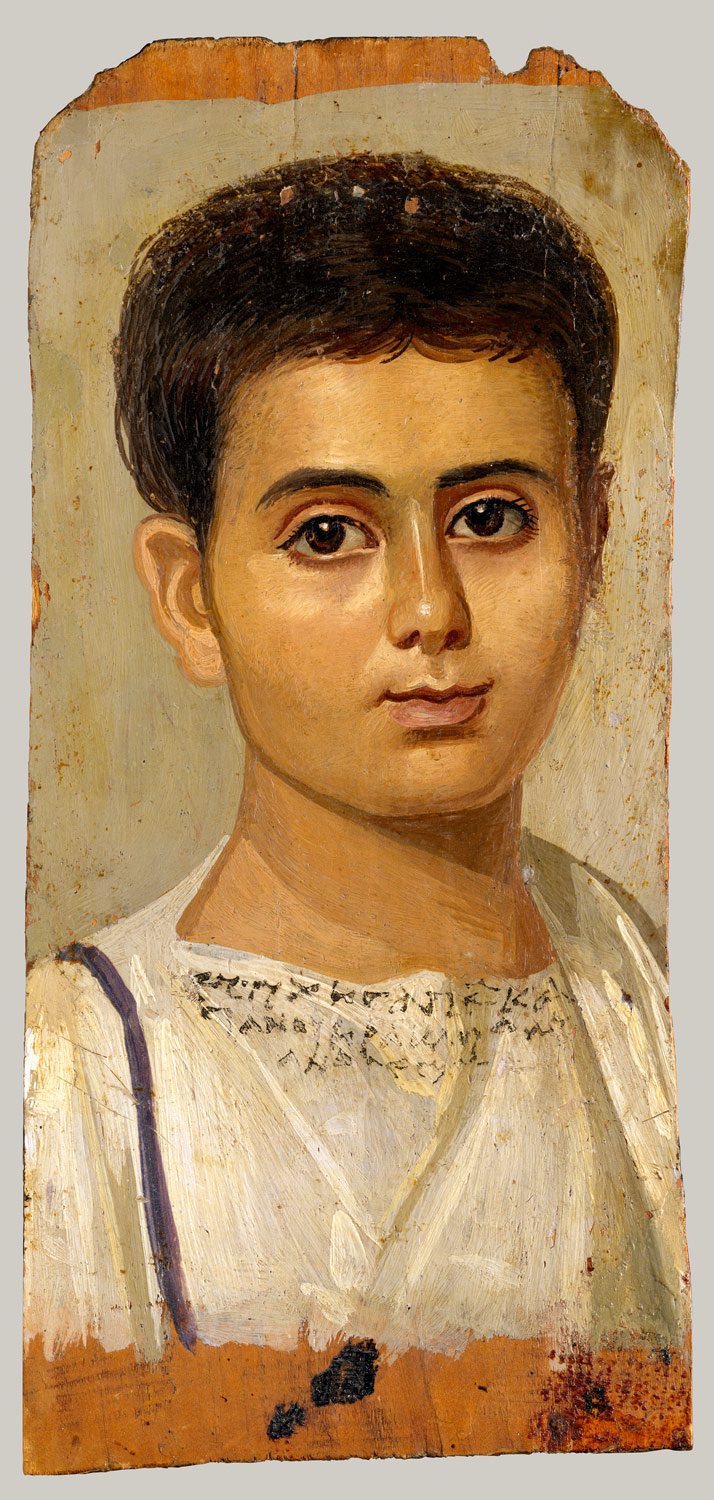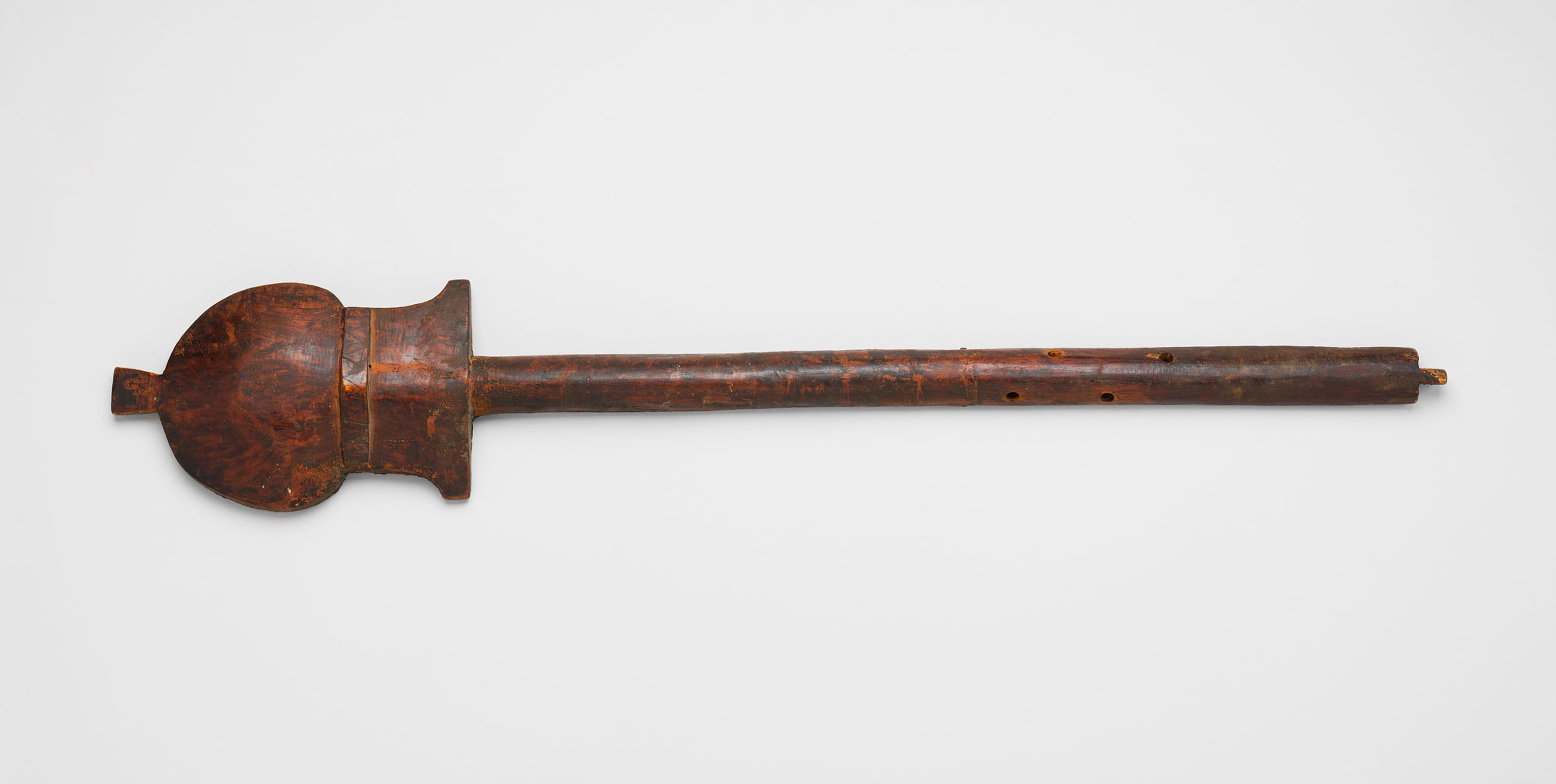Alexandria is the focal point of Greek culture on the Mediterranean and the nexus of Roman trade routes to the deserts, inner Africa, and the East. In the mid-second century, Alexandria becomes one of the leading intellectual centers of the Christian Church. Egyptian temples are closed in 392 A.D. by order of the Byzantine emperor. The last known hieroglyphic inscription, from Philae, dates to 394 A.D. Egypt’s dry climate, combined with the new custom of burying the dead in their clothes and wrapped in shawls and hangings, helps preserve an unusual number of textiles.
Egypt, 1–500 A.D.
Timeline
1 A.D.
125 A.D.
125 A.D.
250 A.D.
250 A.D.
375 A.D.
ANCIENT EGYPT
ANCIENT NUBIA
375 A.D.
500 A.D.
Overview
Key Events
-
1st century A.D.
Alexandria is the focal point of Greek culture on the Mediterranean and the nexus of Roman trade routes to the deserts, inner Africa, and the East. Serapis and Isis attain great popularity throughout the Roman empire. Within Egypt, the Roman emperors represent themselves as the successors to the pharaohs and continue to build temples in Egyptian style. The ancient Egyptian funerary tradition is little changed, and the dead continue to be mummified, but the funerary arts evolve in a new direction marked by the incorporation of Greco-Roman hairstyles, dress, and artistic techniques and styles. Christianity arrives in Egypt, flourishing in the large Jewish community in Alexandria. Saint Mark is called the first bishop of that city and is said to have been martyred there in 66 A.D.
-
2nd century A.D.
Hieroglyphic and demotic are now used only in connection with the temples and priesthoods; Greek is the language of administration. The panel-portrait genre associated with the Greco-Egyptian elite peaks midcentury. The last major Roman temples constructed in the traditional pharaonic style date to the reign of the Roman emperor Antoninus Pius (r. 138–161 A.D.). In the latter part of the century, problems in the larger Roman empire are reflected in erratic policies and persistent economic and social problems within Egypt that continue through the third century.
-
mid-2nd–5th century A.D.
Alexandria is one of the leading intellectual centers of the Christian Church. Among the great Christian scholars teaching there are Clement (died 215 A.D.) and Origen (died 253 A.D.). Gnostic and Neoplatonic scholars are also active in the city.
-
3rd century A.D.
Ongoing economic change is seen in the growth of tenant agriculture and the increasing concentration of wealth and culture in cities, not only Alexandria but metropolitan centers such as Antinoopolis in the Nile valley. The last panel portraits probably date to midcentury. However, portraits on shrouds continue to be painted in Antinoopolis even into the fourth century with the complex religious imagery of the era. Coptic, a new written form of the Egyptian language, facilitates the spread of Christian literature.
-
3rd–4th century A.D.
Christian hermits in the Egyptian desert begin a new style of communal living, later known as monasticism. The earliest monastic communities are made up of hermits who spend most of their time in solitude. Communities of monks who live and work together are formed early in the fourth century. Pachomius writes the first rules for monastic life in about 321 A.D.
-
4th century A.D.
Arius of Alexandria preaches that Christ is divine but not as divine as the Father. His philosophy, known as Arianism, spreads widely among peoples on the borders of the Byzantine empire as well as among members of the imperial court. Egyptian temples are closed in 392 A.D. by order of the Byzantine emperor. The last known hieroglyphic inscription, from Philae, dates to 394 A.D.
-
4th–5th century A.D.
The arts in all media—stone and wood sculpture, carved ivories, painted glass, ceramics, and textiles—are decorated with pagan and Christian themes reflecting the cultural diversity of the era. Egypt’s dry climate, combined with the new custom of burying the dead in their clothes and wrapped in shawls and hangings, helps preserve an unusual number of textiles.
-
415 A.D.
Hypatia, a famous pagan woman philosopher, is stoned to death in Alexandria.
-
451 A.D.
Rejecting the Council of Chalcedon, the Egyptian church distances itself from the authority of Rome and Constantinople, laying the groundwork for what is today called the Coptic Church.
Citation
“Egypt, 1–500 A.D.” In Heilbrunn Timeline of Art History. New York: The Metropolitan Museum of Art, 2000–. http://www.metmuseum.org/toah/ht/?period=05®ion=afe (October 2000)
Related
Map




















